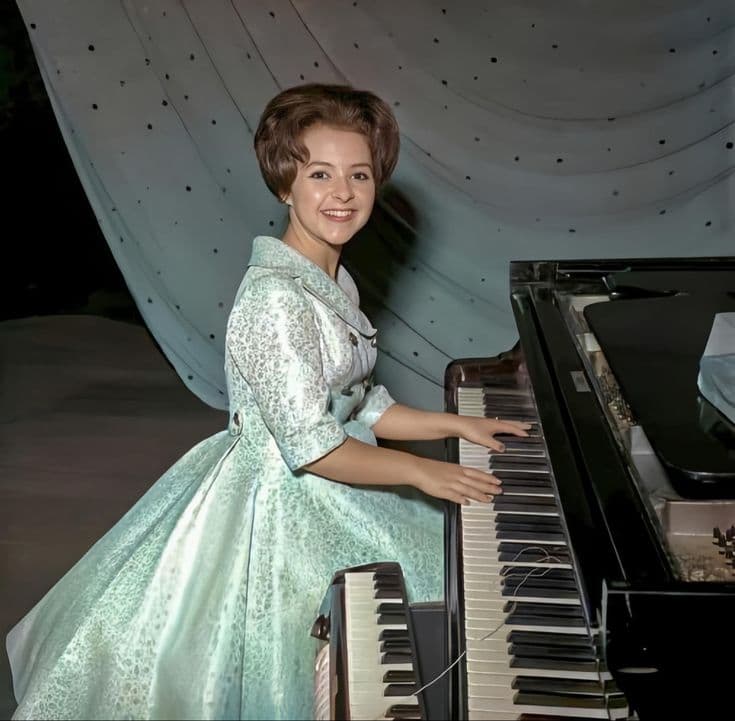
A Voice That Carried Loneliness Like a Torch – A Song of Heartbreak’s Silent Echo, Resonating Through an Empty Room
In the crisp fall of 1962, Brenda Lee released All Alone Am I, a mournful ballad that soared to No. 3 on the Billboard Hot 100 and No. 1 on the Easy Listening chart, a standout from her album of the same name, All Alone Am I, which peaked at No. 8 on the Billboard 200. Dropped in September as a single on Decca Records, it sold over a million copies, earning gold status and cementing Lee’s reign as “Little Miss Dynamite” with a voice that could break hearts at sixteen. Written by Arthur Altman with lyrics adapted from the Greek song “Monos Mou, Monos” by Manos Hadjidakis, and produced by Owen Bradley in Nashville’s Quonset Hut Studio, it was a transatlantic treasure reshaped for American airwaves. For those of us who tuned in back then, it was a tear-streaked companion—a song that wrapped around us like a shawl against the chill of a world turning too fast.
The making of All Alone Am I is a tale of serendipity and sorrow. Lee, barely out of her teens, had already conquered charts with I’m Sorry (No. 1, 1960) when Bradley heard the Greek original—a 1960 hit by Mikis Theodorakis—and saw its potential. Altman reworked it, keeping the ache but tailoring it to Brenda’s powerhouse pipes, while Bradley layered in strings and a mournful guitar to match her trembling delivery. Recorded in a single August session, it was a quick affair—Lee nailing that vocal in a take or two, her voice raw from a summer cold, they say, adding a shiver of truth to every line. It came at a pivot point: rock ‘n’ roll was softening, the British Invasion loomed, and Brenda, still a kid from Georgia, was growing into a woman who could sing loss like she’d lived it. This wasn’t her usual pep; it was a plunge into the deep end, born from a melody that crossed oceans to find her.
All Alone Am I is a cry from a soul left stranded—a lament for love’s departure, where silence is the loudest sound. “All alone am I ever since your goodbye,” Lee sings, her voice a fragile flame, flickering with “memories that cling to me” and a heart too heavy to mend. It’s about the solitude that settles in when someone’s gone, the way time slows to a crawl, and every corner holds a ghost. For us who heard it in ’62, it’s a memory of autumn leaves falling slow, of AM radios glowing in darkened bedrooms, of a time when heartbreak felt like the end of everything—first loves fading, letters unanswered, the world a little colder without them. Brenda made it ours, her youth belying the depth she poured into every note.
Step back to that year—poodle skirts giving way to slimmer lines, black-and-white TVs flickering with Ed Sullivan, and Brenda Lee on the airwaves, a tiny titan who could hush a room. All Alone Am I wasn’t just a hit; it was a moment, a bridge between the ’50s innocence and the ’60s storm. It’s the scent of hairspray at a school dance, the rustle of a 45 sleeve by a jukebox, the ache of watching headlights fade down a gravel road. We’d crowd around the record player, letting her voice fill the spaces we couldn’t name, feeling grown-up in our borrowed grief. It lingered—in covers by Timi Yuro, in oldies revivals—but Brenda’s take, with its quiver and its quiet, is the one that haunts. Now, as we trace the lines time’s drawn on us, All Alone Am I pulls us back—to the nights we sat alone, to the loves we lost, to a little girl from Georgia who sang our loneliness into something beautiful.